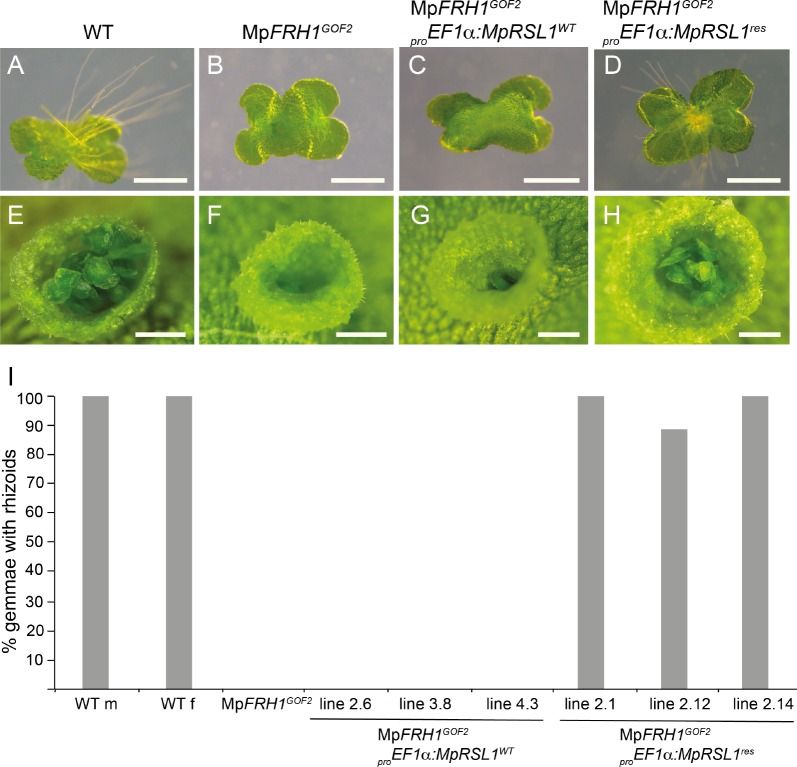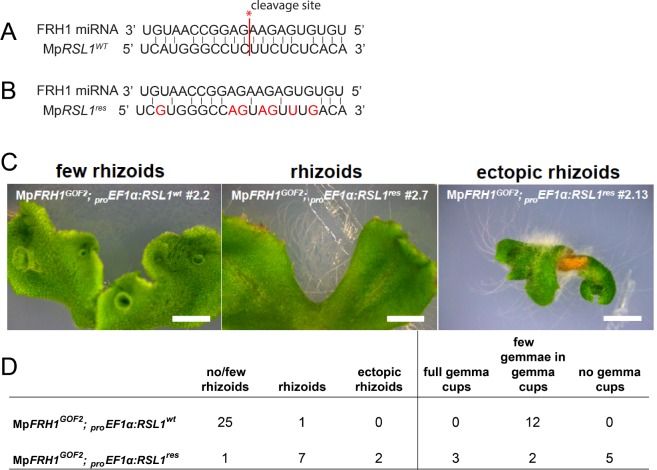Figure 5. MpFRH1 miRNA-resistant form of MpRSL1 restores rhizoid and gemma development in the MpFRH1GOF2 mutant background.
Three day old gemmae (A–D) of WT (A), MpRSL1GOF2 (B), MpFRH1GOF2; proEF1a:MpRSL1WT (C) and MpFRH1GOF2; proEF1a:MpRSL1res (D), scale bar 500 μm. Gemma cup of mature WT (E), MpRSL1GOF2 (F), MpFRH1GOF2; proEF1a:MpRSL1WT (G) and and MpFRH1GOF2; proEF1a:MpRSL1res (H), scale bar 500 μm. (I) Percentage of three day old gemmae forming rhizoids, n = 18 for each line.


